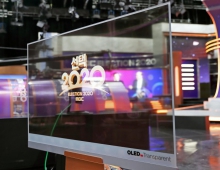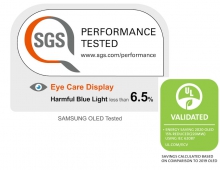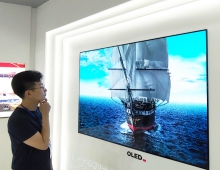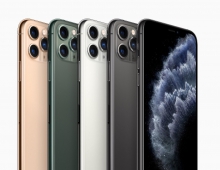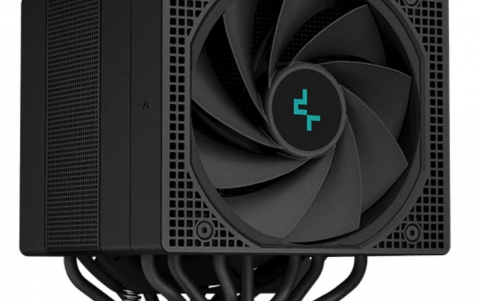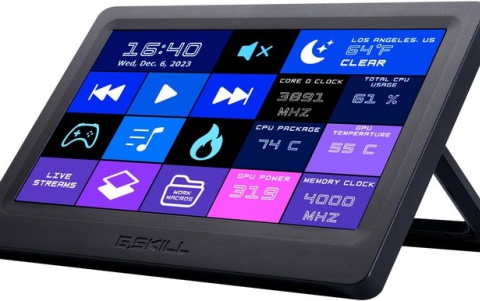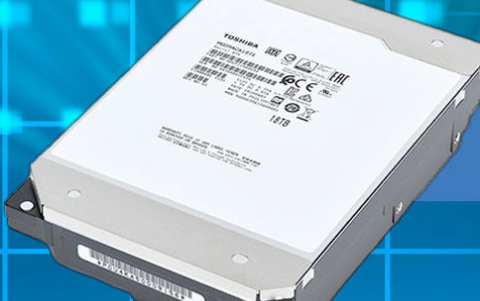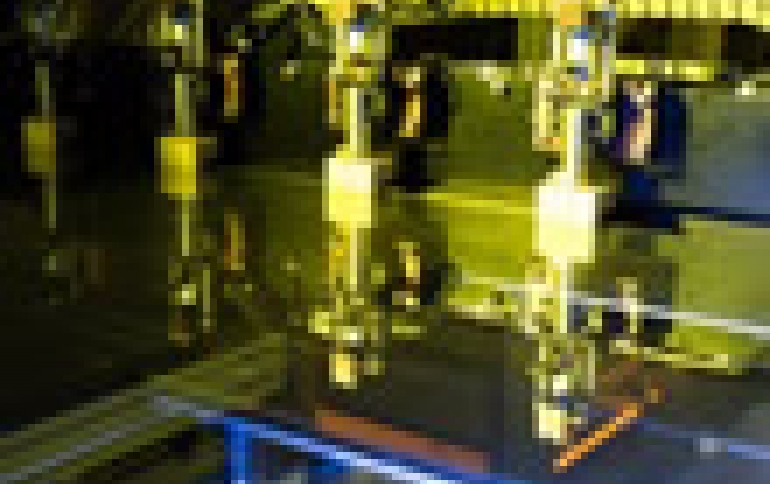
Inkjet Printing Platform Could Help Making Cheaper OLED Displays
Manufacturing equipment maker Kateeva says that its new manufacturing equipment can produce affordable OLED displays, rigid and flexible.
Kateeva has debuted YIELDjet - an inkjet printing manufacturing equipment solution to produce such OLEDs in high volume. Engineered from the ground up for OLED mass production, YIELDjet promises to enable dramatic yield improvements compared to to existing manufacturing technologies. In turn, yield improvements can drive production costs lower.
Manufacturing challenges are holding up mass production of OLED displays. 55" OLED TVs debuted this year, fulfilling the promise of a spectacular viewing experience, albeit at a high price. Dr. Jennifer Colegrove, President of Calif.-based Touch Display Research, expects that 2016 will be the take-off year for OLED TVs. By 2020, she predicts that the market will reach $15.5 billion.
Existing OLED manufacturing is constrained by vacuum evaporation techniques that use shadow masks for patterning. It?s a simple technique, but inefficient, difficult to scale, and prone to yield-killing particles.
Kateeva says inkjet printing is the ideal replacement.
The company has tackled device lifetime - the single most important device characteristic. The company developed a production worthy way to enclose the tool in a pure nitrogen chamber. Nitrogen is the ultimate OLED processing environment. It shields OLED materials from moisture and air [known degraders of quality], and enables consistently superior device lifetime.
Early data shows that with YIELDjet, device lifetime in certain applications more than doubles. A smaller process enclosure speeds post-maintenance recovery and replacement of printheads without exposing the enclosure to air. This means that downtime drops from as much as 24 hours to less than two.
Kateeva also claims that it confronted particle contamination, a guaranteed yield killer. Borrowing stringent protocols from the semiconductor industry, Kateeva equipped YIELDjet with advanced mechanical design features that sharply reduce particle generation, eliminate turbulence, and quickly capture any particles generated. According to Kateeva, the result is a 10X reduction in particles when compared to commonly used OLED production techniques.
Finally, Kateeva optimized YIELDjet for reliability and uptime. Exceptional coating uniformity is a strict requirement for production-quality OLED displays. Kateeva says that YIELDjet provides such uniformity with an ultra-wide process window - 5X wider than standard technologies - achieved via unique algorithms and superior process control technologies.
Kateeva is now pivoting to full-scale commercialization.
Manufacturing challenges are holding up mass production of OLED displays. 55" OLED TVs debuted this year, fulfilling the promise of a spectacular viewing experience, albeit at a high price. Dr. Jennifer Colegrove, President of Calif.-based Touch Display Research, expects that 2016 will be the take-off year for OLED TVs. By 2020, she predicts that the market will reach $15.5 billion.
Existing OLED manufacturing is constrained by vacuum evaporation techniques that use shadow masks for patterning. It?s a simple technique, but inefficient, difficult to scale, and prone to yield-killing particles.
Kateeva says inkjet printing is the ideal replacement.
The company has tackled device lifetime - the single most important device characteristic. The company developed a production worthy way to enclose the tool in a pure nitrogen chamber. Nitrogen is the ultimate OLED processing environment. It shields OLED materials from moisture and air [known degraders of quality], and enables consistently superior device lifetime.
Early data shows that with YIELDjet, device lifetime in certain applications more than doubles. A smaller process enclosure speeds post-maintenance recovery and replacement of printheads without exposing the enclosure to air. This means that downtime drops from as much as 24 hours to less than two.
Kateeva also claims that it confronted particle contamination, a guaranteed yield killer. Borrowing stringent protocols from the semiconductor industry, Kateeva equipped YIELDjet with advanced mechanical design features that sharply reduce particle generation, eliminate turbulence, and quickly capture any particles generated. According to Kateeva, the result is a 10X reduction in particles when compared to commonly used OLED production techniques.
Finally, Kateeva optimized YIELDjet for reliability and uptime. Exceptional coating uniformity is a strict requirement for production-quality OLED displays. Kateeva says that YIELDjet provides such uniformity with an ultra-wide process window - 5X wider than standard technologies - achieved via unique algorithms and superior process control technologies.
Kateeva is now pivoting to full-scale commercialization.

